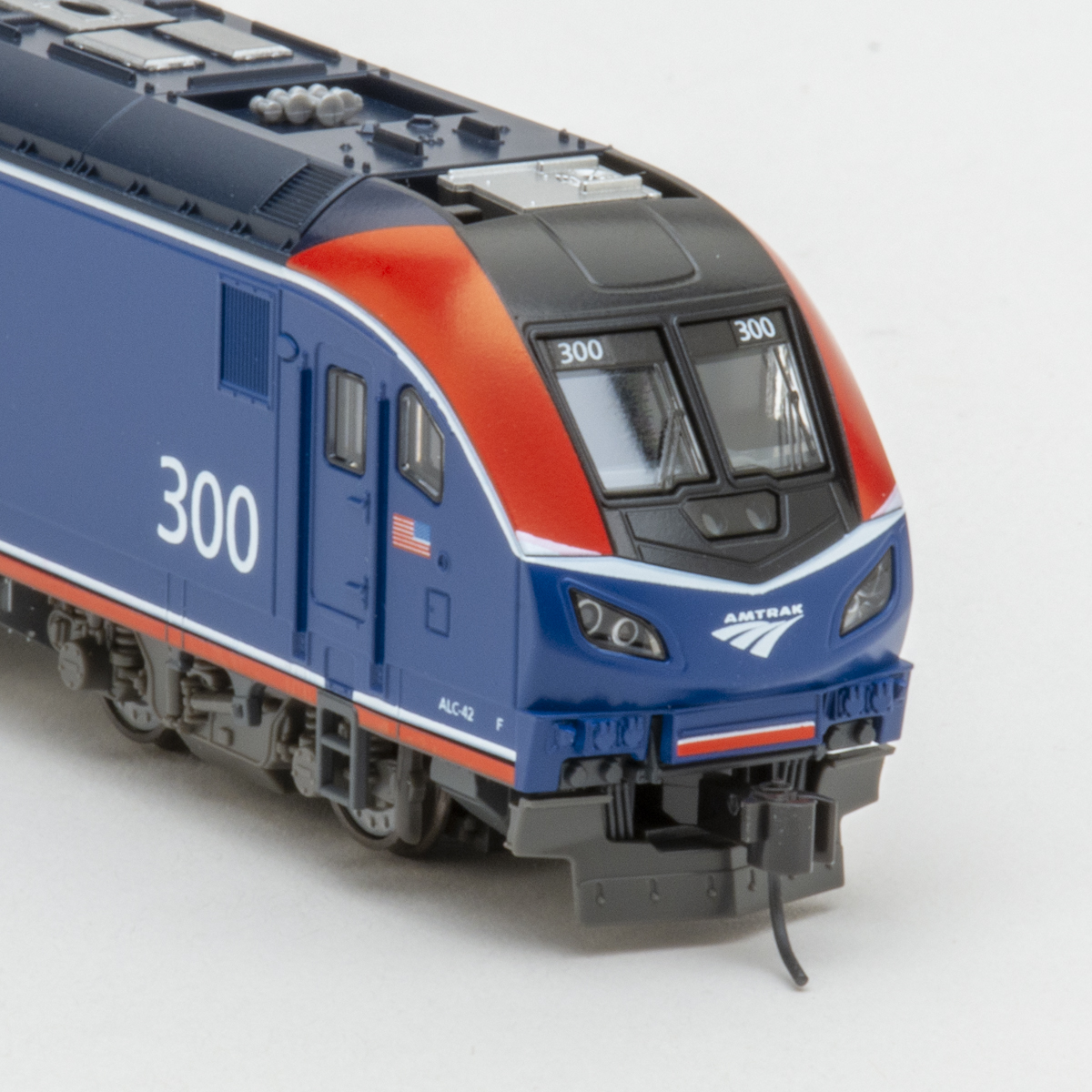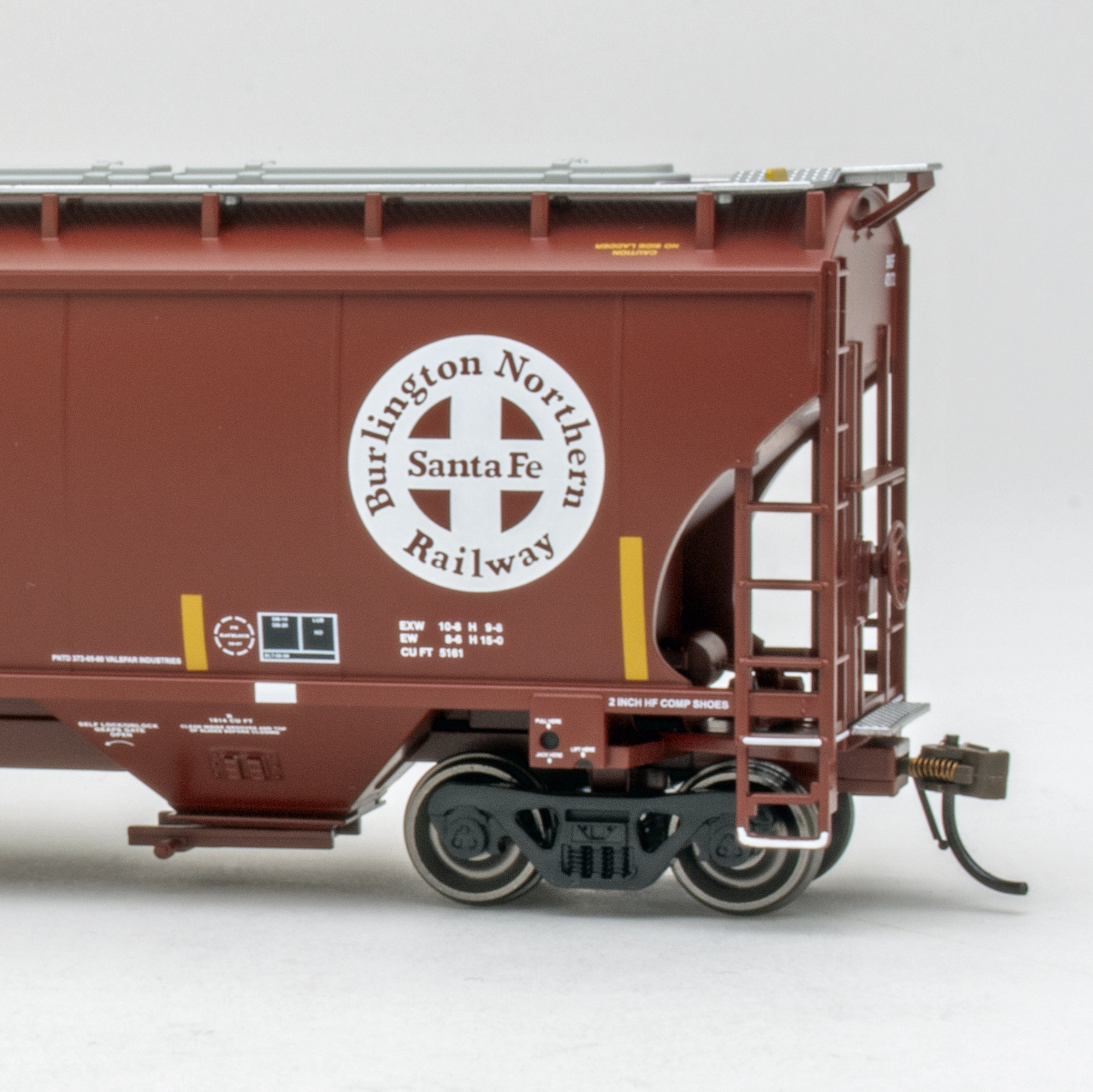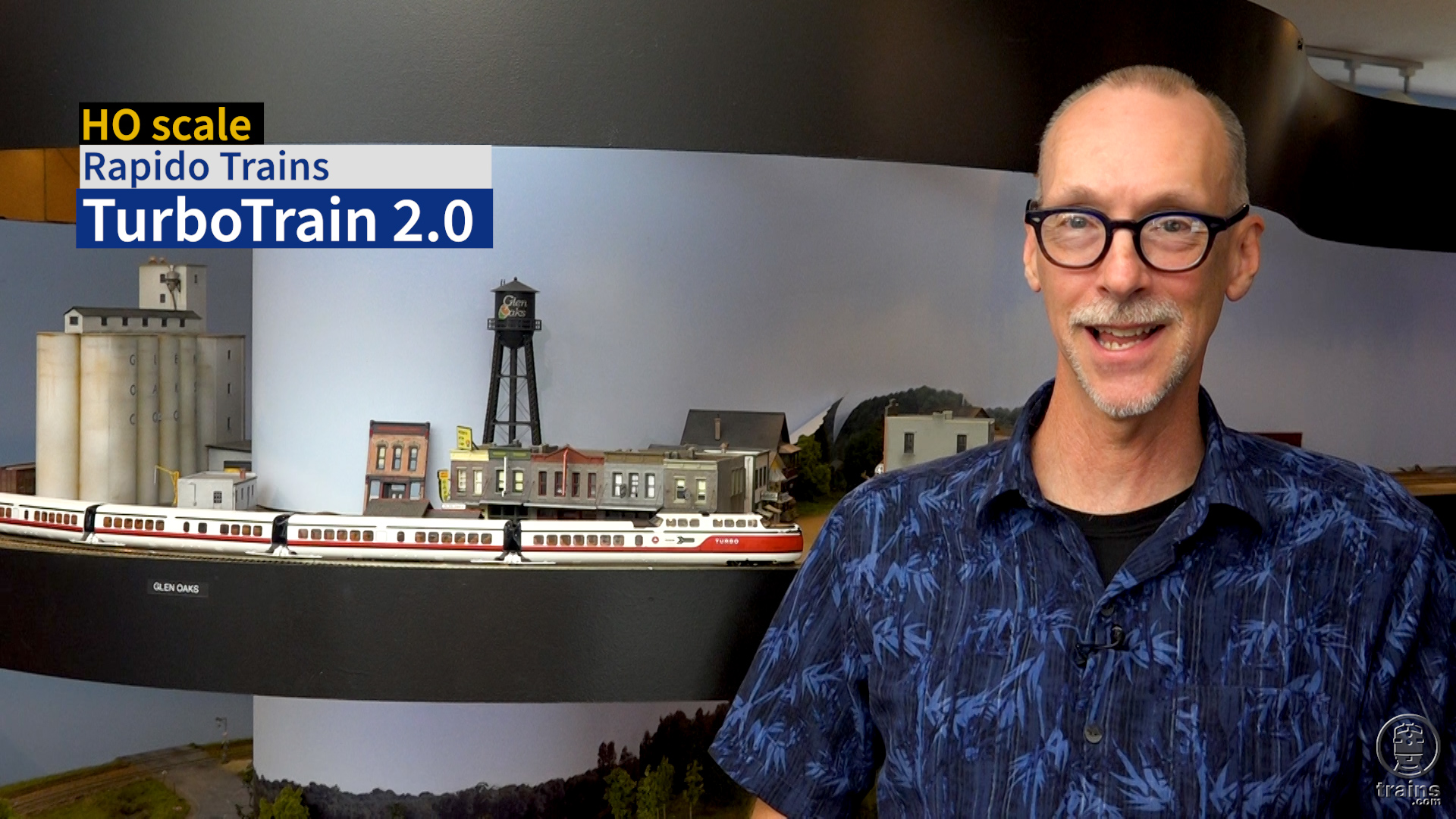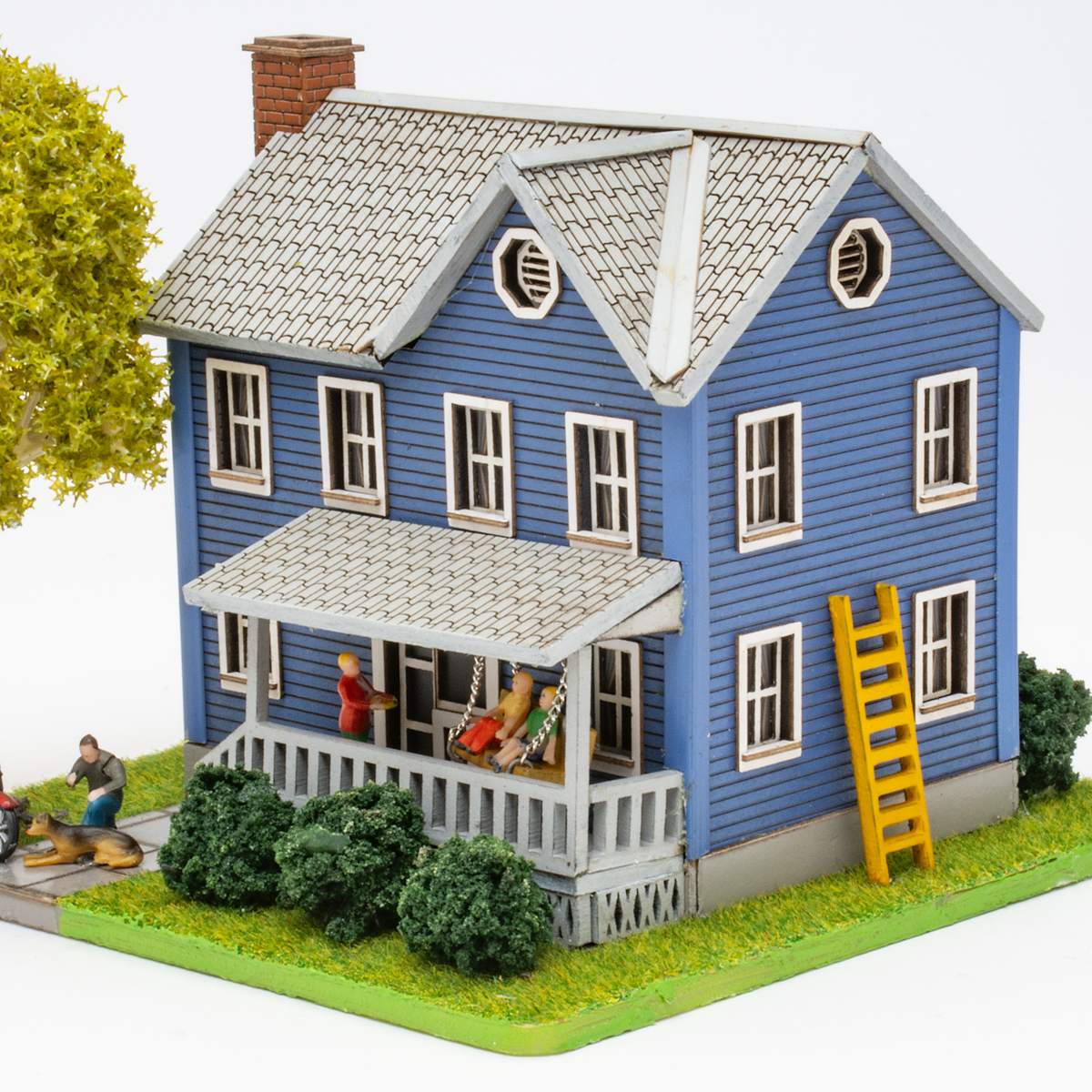
A Budd Slumbercoach is the latest addition to the Rapido Trains HO scale passenger car fleet. The 24-single-room, 8-double-room car is based on the as-built version with steam heat equipment. The injection-molded plastic model features separate, factory-applied name boards; etched-metal end gates; and sprung diaphragms.
Prototype history
Budd produced the Slumbercoach from 1956 to 1959. During the course of the production run 18 cars were built. Baltimore & Ohio had the largest fleet with five cars. Chicago, Burlington & Quincy; New York Central; and Northern Pacific had four cars each. Missouri Pacific had one. The full-size car had a 40-passenger capacity.
The sample we received is decorated as NP No. 327, part of the railroad’s 325 through 328 series. Northern Pacific leased the four cars starting in 1959 and purchased them in 1964. The full-size 327 (plan 9540) was built by The Budd Co. under Job No. 9691-090 in 1959. The sleeper was part of NP’s Loch series; car 327 was named Loch Lomond. In Burlington Northern Passenger Cars by Charles A. Rudisel (C.A.R. Publications, 1974), it notes, “The Slumbercoaches were designed to provide modestly furnished private room accommodations for economy-minded travelers at coach fare plus a nominal room charge. They were given Scottish lake names to suggest thrift.”
Northern Pacific added eight more Slumbercoaches to its fleet in 1964 when it acquired four cars from NYC and an equal number from The Budd Co. that were leased to B&O and MP. The cars were numbered 329 through 336. The following year NP sold cars 335 and 336 to the Chicago, Burlington & Quincy.
Loch Lomond was one of 16 Budd Slumbercoaches that became part of Amtrak’s fleet in 1971. The car, which retained its name, was first renumbered 2026 and painted in the passenger carrier’s phase 1 scheme. In March 1980 the car was upgraded with head-end power, renumbered 2084, and repainted in the phase 3 scheme. Amtrak put the 24-8 sleeper up for sale in October 1995.
Model features
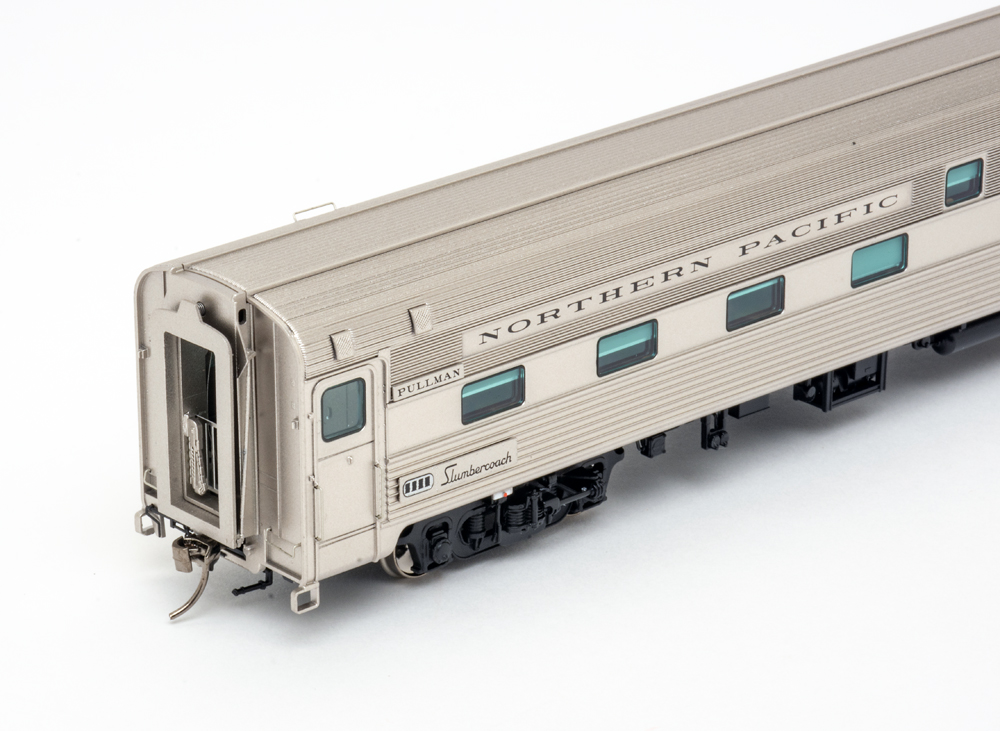
The Rapido Trains model has a one-piece injection-molded plastic body with crisply defined Budd-style fluting. Freestanding formed wire grab irons are found on the sides, roof, and ends. The factory-applied uncoupling levers are molded in black plastic.
The Slumbercoach has an illuminated, multi-color interior. The constant, track-powered lighting works on direct current and Digital Command Control. The lights can be turned on and off with the supplied magnetic wand. The backs of the roomette doors feature mirrors, and the windows have blinds.
Underbody details

Similar to other Rapido HO passenger cars, the Slumbercoach is loaded with underbody details. Both ends of the car have Barco steam connectors. On the B end of the sleeper, to the left of the truck, is a Safety Industries Inc. Genemotor with shaft and cable detail. The axle-driven generator was used to power the air conditioning, electrical equipment, and lighting.
Additional underbody details include battery charging receptacles; an air conditioner condenser; a multi-piece Trane air conditioner compressor unit; a D22 brake system with a combined reservoir, control valve, quick-service valve, and relay valve; two main reservoirs; and battery boxes. Details on the water tank include fillers and steam regulator valves.
Our Northern Pacific review sample has stainless steel sides with a black underbody and trucks (the battery boxes are silver). The placement of the name boards matches a prototype photo of car 327 I found online. The model’s dimensions closely follow drawings published in Rudisel’s book.
The car rides on multi-piece General Steel Castings 41-NDO-11 trucks with disc brake detail on the back. The metal wheel stubs mounted on plastic axles are correctly gauged.
Though the couplers are at the correct height, from the factory they had low trip pins. A quick adjustment with trip pin pliers fixed the issue. At 7.4 ounces, the model is .7 ounce too heavy per National Model Railroad Association Recommended Practice 20.1.
With its staggered window arrangement, the full-size Budd 24-8 Slumber-coach certainly stood out in trains such as NP’s North Coast Limited, Baltimore & Ohio’s National Limited, and Missouri Pacific’s Texas Eagle. Rapido has done a good job faithfully re-creating the fluted-side car as it appeared from delivery through the early 1980s.
Facts & features
Price: $119.95
Manufacturer:
Rapido Trains Inc.
500 Alden Rd., Unit 21
Markham, Ontario, Canada
L3R 5H5
Era: 1959 to 1970 (as decorated)
Road names: Northern Pacific; Amtrak (phases 1 and 3); Baltimore & Ohio; Burlington Northern; Chicago, Burlington & Quincy (NP); Missouri Pacific; and New York Central. One to five car numbers per scheme; also available painted silver and black but unlettered.
Features:
- Body-mounted metal couplers, at correct height (trip pins low from the factory)
- Metal wheel stubs mounted on plastic axles, correctly gauged
- Minimum radius: with factory-installed medium-shank couplers, 24″; with long-shank couplers, 22″
- Weight: 7.4 ounces, .7 ounce too heavy per National Model Railroad Association Recommended Practice 20.1






